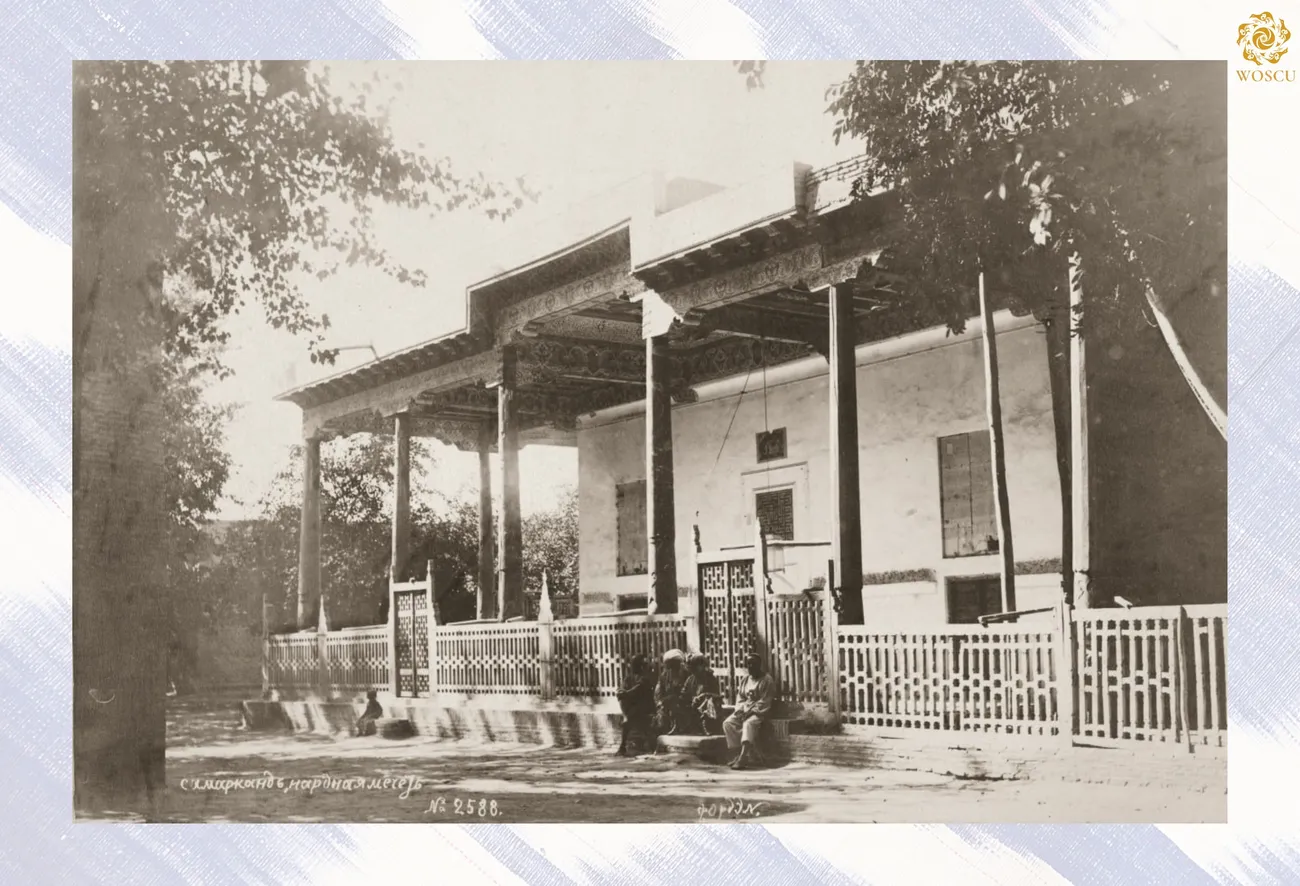The religious buildings in large cities, madrasas and mosques all over the region, always got caught into the lens. They brought a special flavour to urban architecture. In each city, there were more than one dozen mosques, but in Bukhara, which was called the “Rome of Islam,” there were more than three hundred. In all the more or less known cities there was a jameh mosque, for the construction of which the best place near the main city square was traditionally assigned. Their domes and slender minarets, towering above the low-rise apartment buildings of similar type, were the main composite nodes of the city, its overseers. In addition, many jameh mosques were old monumental buildings, which additionally attracted the attention of photographers. Due to their work, photographs have been preserved of a number of mosques that today no longer exist or have been reconstructed over time and have significantly changed their appearance.
Less often, in historical photographs, one can see small mosques, which were located in different quarters of the city and often differed from other houses only by individual architectural features and an open entrance, not blocked by a solid fence. However, it was the quarterly mosques that played an important role in the organization of urban space.
You can learn more about the topic in the book-album “Uzbekistan in historic photographs of the 19th - early 20th centuries in the collections of Russian archives” (Volume XXXVII) in the series “Cultural Legacy of Uzbekistan”.
The general sponsor of the project is the oilfield services company Eriell-Group.

